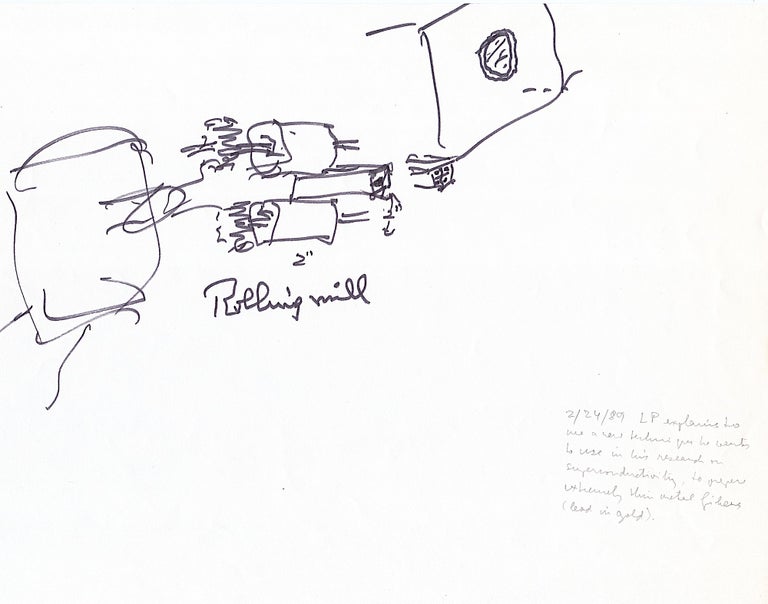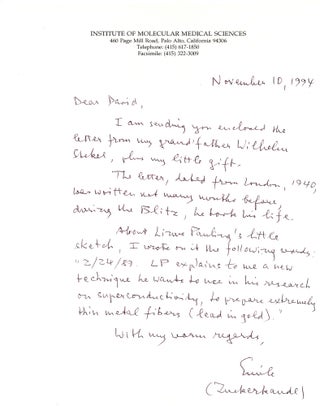LINUS. Emile Zuckerhandl PAULING
Linus Pauling Sketch of his Superconductivity invention.
Linus Pauling sketched his superconductivity invention. SIGNED by Emile Zuckerhandl, biologist. Pauling is generally associated with chemistry, Vitamin C, and peace. He also had a keen interest in superconductors. In our sketch, drawn in 1989, Pauling illustrates his new technique on superconductivity for biologist Emile Zuckerhandl. Zuckerhandl (1922-2013), a founder of molecular evolution, worked with Pauling to develop the molecular clock hypothesis. Writing in pencil, Zuckerhandl described the sketch on the lower right corner of the page. "2/4/89 LP [Linus Pauling] explains to me a new technique he wants to use in his research on superconductivity, to prepare extremely thin metal fibers (lead in gold)." Pauling wrote "Rolling Mill" under his sketch. On his professional stationery, Zuckerhandl wrote an explanation of the drawing for David Schulson who purchased it in 1994. "About Linus Pauling's little sketch, I wrote on it the following words..." The words are the same as the description already quoted.
The 4to size drawing is signed and dated by Zuckerhandl "2/24/89."
Pauling worked with several scientists in addition to Emile Zuckerhandl, to develop a superconductivity product starting in 1988. Pauling and his team created a, "composite structure in which superconducting materials assumed the form of fine strands embedded in a wave-guiding matrix. The matrix restricted the superconducting current to a linear motion; however, the strands did not need to be straight, but could also be bent or interconnected into a network. This matrix would be built of a non-conducting material...." [ Pauling's Superconductivity Patent, Dec. 12, 2012 on Paulingblog ] Pauling sought patents for his invention and with Zuckerhandl and businessman Richard Hicks set up a company to manage the business side of his superconductivity invention. Ultimately, the product found no buyers, the company suffered financial difficulties, Zuckerhandl established his own Institute of Molecular Medical Sciences, and Pauling died in 1994.
Item #4847
Price: $2,500.00

